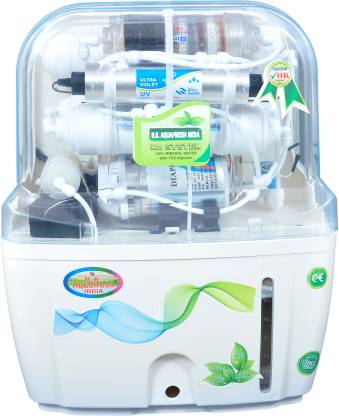Which Type of Water Purifier is Best for You?
Are you considering a water purifier for your home or office? You'll have many questions about what is the best type for your needs, installation requirements, and the safety of drinking purified water.In this post we will answer some of your most common questions. We’ll help you understand which type of purifier might be best, how to install it correctly, cost considerations and potential downsides. You’ll have everything you need to make an informed decision about whether a water purifier is right for you.Use the table of contents below to jump forward to a specific question.There are four main types of water purifiers including: reverse osmosis, carbon filtration, ozone and ultraviolet light. Each type has its own pros and cons. Some examples include: carbon filters that may reduce chlorine odor but not remove other dangerous chemicals, ultraviolet lights that kill germs but may not remove other dangerous chemicals, and reverse osmosis that removes everything but may waste a lot of water (and electricity) in the process.To help you decide which type of purifier might be best for your home or office, review the following table:To help you decide which type of water purifier might be best for your home or office, review the following table:Reverse Osmosis (RO) is the most expensive and inefficient of the four types. It uses a high pressure pump to force water through some kind of filter to remove impurities. The most common filters used in RO water treatment systems are coagulants (to remove particles and other contaminants) and activated carbon filters (to remove chlorine and other impurities). In an ideal world, RO filter can remove all forms of harmful chemicals that enter our water supply.
Image source: https://www.reliancedigital.in/
However, in the real world of water treatment RO filter has a limited capacity and it must be replaced regularly. This, combined with inefficiencies from the high pressure pump (which wastes energy and water) makes RO filtering the most expensive and least efficient method of purifying water.The other down side to RO filters is that they waste a lot of water. In order for RO filter to remove contaminants, it must use an amount of water that is much larger than the amount of purified drinking water itproduces. When water is evaporated to remove impurities, the lost water can be replaced, but it is a significant amount of water that is not used in the production of drinking water.Even worse, because of their inefficiency and high cost, RO filters are more subject to damage than other types of filters. The filters must be replaced with greater frequency and they are often difficult to access, especially under the sink or in a closed cabinet. Repairs can be costly and time consuming.In short, RO filters are the most expensive, least efficient and most difficult to maintain of all three types of water purifiers. On the plus side, RO filter is also the most effective at removing chemical contaminants from drinking water. It can remove just about anything that may be in your tap water including:Turbidity (fine suspended solids)
Image source: https://www.flipkart.com/
Minerals such as calcium, sodium and iron. These minerals can cause scale buildup inside pipes or fixtures. The buildup itself can reduce flow volume and pressure or clog plumbing systems. If left untreated, these minerals can etch glass surfaces, such as sinks and faucets and leave white stains on fixtures and counters.

Comments
Post a Comment